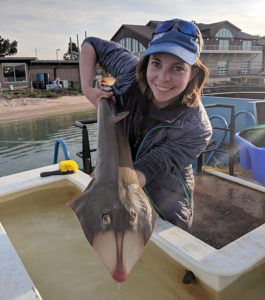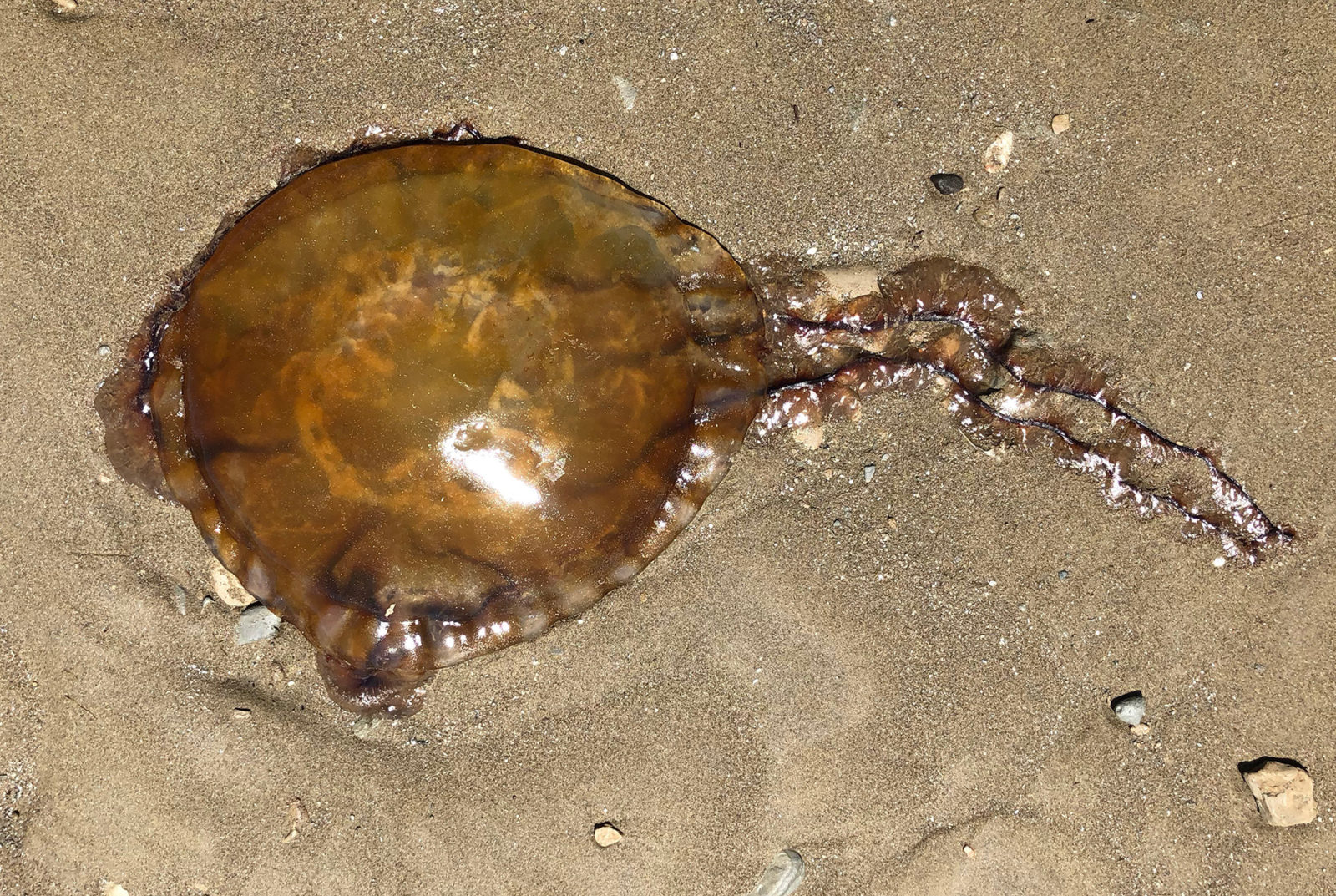What is causing all the sea nettles around the San Mateo Bridge? -Sally Galentine, San Mateo
The jelly in the photo is the Pacific sea nettle (Chrysora fuscescens), which can be found up and down the California coast. Some jellies are found in the Bay throughout the year, such as the comb jelly and the bell medusa. Other jellies, such as moon jellies and nettles get swept into the Bay during an incoming tide. These animals are drifters, which means that they are unable to control their overall movement through the water column. Due to this year’s water conditions, jellies have been blooming, which means thousands of jellies have been swept into the Bay. These blooms happen when a variety of factors, such as currents, temperature, nutrients, and prey availability are just right.
Jellies have a strange and complex life cycle. What we call a jellyfish is this animal’s medusa stage, which is just a small sliver of their life cycle. For most of its existence, a jellyfish is in the polyp stage, which looks like a sea anemone. These polyps are extremely small, and are great at disguising themselves among the detritus and organisms along the seafloor. Once conditions are right, polyps produce pancake-like stacks of baby jellies, or ephyra. Prior to this year, the conditions have been less-than-ideal offshore due to the effects of a strong El Niño, as warmer and nutrient-poor water sloshes north from the Equator instead of the cool nutrient rich water from the trenches off our coast.
In a warm year there’s not enough prey to satisfy ravenous jellies, so instead of producing ephyra, the polyps make copies of themselves while they wait for better conditions. Once those conditions are met, all the clones release their ephyra, casting millions of new jellyfish into the water. Which is likely what’s happened this year: now that we are no longer in El Niño, the water is cool enough for all of these polyps to release ephyra, creating a massive bloom of jellyfish. The sea nettle bloom in 2018 was first noticed in Monterey, and the jellies have been progressively making their way up the coast of California, where they have been swept by the thousands into the Bay.
Due to this life cycle, jellies are rock stars at surviving, and human activities have been making it easier for these polyps to propagate. Warming waters due to climate change means more polyps. Our structures such as docks, bridges, and boats are perfect places for polyp colonies. Polyps have also been found on floating pieces of plastic! As the medusa form ages, it collapses on the bottom and forms new polyps. Although the medusa stage looks delicate, they are surprisingly hardy. This stage can survive conditions that would kill other animals, such as low oxygen. In essence, our activities are encouraging the spread of these animals, which can have some drastic ecological impacts upon the Bay and ocean.
 Eve Minkin is a marine instructor at the Marine Science Institute in Redwood City. She graduated from Eckerd College in 2015 with a BS in marine biology and will begin a master’s program in biology in the fall.
Eve Minkin is a marine instructor at the Marine Science Institute in Redwood City. She graduated from Eckerd College in 2015 with a BS in marine biology and will begin a master’s program in biology in the fall.
Ask the Naturalist is a reader-funded bimonthly column with the California Center for Natural History that answers your questions about the natural world of the San Francisco Bay Area. Have a question for the naturalist? Fill out our question form or email us at atn at baynature.org!



